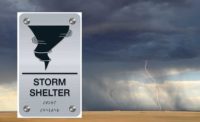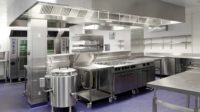Fortunately, guidance is available to help design teams constructing K-12 school buildings cut annual energy use by 50% or more using off-the-shelf technology.
To help ensure schools receive an A+ in energy efficiency, owners, engineers, designers, architects, and others on the building team are encouraged to download the free Advanced Energy Design Guide for K-12 School Buildings: Achieving 50% Energy Savings Toward a Net Zero Energy Building. The guide is the second to be released in a series which provides recommendations to achieve 50% energy savings when compared with the minimum code requirements of ANSI/ASHRAE/IESNA Standard 90.1-2004, Energy Standard for Buildings Except Low-Rise Residential Buildings.
Advanced Energy Design Guides, or AEDGs, allow owners, contractors, consulting engineers, architects, and designers to easily achieve advanced levels of energy savings without detailed energy modeling or analyses. Written in partnership with ASHRAE, the American Institute of Architects, the Illuminating Engineering Society of North America, the USGBC, and the DOE, the guides are available for free in electronic form at www.ashrae.org/freeaedg.
“Significant research demonstrates that the quality of the physical environment affects student performance,” Shanti Pless, chair of the steering committee, said. “An environment that includes appropriate lighting, sound, temperature, humidity, cleanliness, color, and air quality can help students learn better. In many cases, improving these attributes can also reduce energy use.”
The new guide features easy-to-follow recommendations for various climate zones and how to implement tips via a series of real-life school construction case studies. Also included is information on integrated design, including best practices, as a necessary component in achieving 50% energy, and the inclusion of a performance path; specifically, offering guidance for early stage energy modeling and annual energy use targets to help with goal setting.
Additional design tips include:
• High-performance building envelope that is better than Standard 90.1-2004.
• Different ways to daylight 100% of the floor area of classrooms, resource rooms, cafeterias, gymnasiums, and multipurpose rooms for two-thirds of school hours.
• Methods to achieve space-by-space interior lighting power densities that are, on average, 40% better than Standard 90.1-2004.
• Ways to reduced exterior (façade, walkway, parking lot, and drive) lighting energy consumption.
• Recommendations for computers, vending machines, kitchen cooking equipment, walk-in refrigeration equipment, kitchen exhaust hoods, and service water heating.
• Three different HVAC system types that achieve significant energy savings over a typical system.
• Recommendations for commissioning and measurement and verification to ensure that energy savings potentials are realized.
The AEDG also addresses the notion that energy-efficient buildings are more expensive. “Owners should not expect energy-efficient schools to cost more; they can cost more, but they shouldn’t have to. The tips, guidelines, and tables included in the newest AEDG for K-12 schools can set building owners on their way to more energy efficient, productive schools in a cost efficient manner,” Pless said.
The 50% Advanced Energy Design Guide series follows an earlier six-book series that provided guidance to achieve 30% savings. The ultimate goal is to provide guidance to achieve net zero energy buildings; that is, buildings that, on an annual basis, produce more energy than they consume.
ASHRAE, AIA, IES, DOE, and USGBC are currently developing the third guide in the 50% series, which will focus on medium/big box retail. Publication is targeted for winter of 2012, followed by large hospitals in the spring of that year.
Advanced Energy Design Guide for K-12 School Buildings: Achieving 50% Energy Savings Toward a Net Zero Energy Buildingis available as a free download at www.ashrae.org/freeaedg.




